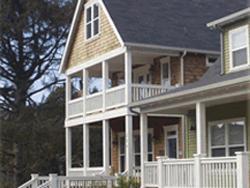Home Prices Continued to Climb in Q2
Washington, DC August 12, 2022-Rising mortgage rates, high inflation, low existing inventory and elevated home prices contributed to housing affordability falling to its lowest point since the Great Recession in the second quarter of 2022.
According to the National Association of Home Builders (NAHB)/Wells Fargo Housing Opportunity Index (HOI), just 42.8% of new and existing homes sold between the beginning of April and end of June were affordable to families earning the U.S. median income of $90,000. This is a sharp drop from the 56.9% of homes sold in the first quarter that were affordable to median-income earners.
“Rising housing costs stemming from increased interest rates, supply chain disruptions that have led to higher prices for building materials, and a persistent lack of construction workers are dramatically affecting home prices,” said NAHB chairman Jerry Konter, a homebuilder and developer from Savannah, Georgia. “Taming housing costs will ultimately require building more homes, and it will be easier to increase production in more affordable smaller and mid-sized markets that are growing in population and attracting new businesses.
“Declining affordability has also pushed builder sentiment down for seven consecutive months and NAHB is projecting a net decline for single-family construction in 2022 as the housing markets slows due to ongoing affordability issues stemming largely from supply side challenges,” said NAHB chief economist Robert Dietz. “Policymakers need to focus on mending broken building material supply chains and reducing ineffective zoning and other regulatory policies to help bend the cost curve and enable builders to boost attainable housing production.”
The HOI shows that the national median home price jumped to an all-time high of $390,000 in the second quarter, surpassing the previous record-high of $365,000 set in the first quarter. “Meanwhile, average mortgage rates soared by 1.47 basis points in the second quarter to 5.33% from an average rate of 3.86% in the first quarter. This is the largest quarterly mortgage rate jump in the history of the HOI series, which dates back to 2012.Home prices continued to climb across nearly all the U.S. in the second quarter, when buyer demand started to fade due to higher mortgage rates but still exceeded the housing market’s unusually low supply,” according to the Wall Street Journal.
“The median sales price was higher in the quarter compared with a year ago for 184 of the 185 metro areas tracked, the National Association of Realtors said Thursday. The only metro area to post a decline was Trenton, New Jersey, where median prices fell 0.7%, NAR said.
“More of the country also experienced double-digit-percentage price gains than earlier in the year. Median prices rose by more than 10% from a year earlier in 80% of the 185 metro areas, up from the first quarter when 70% of metro areas reported double-digit-percentage growth.
“Home prices have hit new highs in recent months as the inventory of homes for sale held below historical levels. The median single-family existing-home sales price rose 14.2% in the second quarter from a year ago to $413,500, a record, according to NAR.
“Potential sellers have been reluctant to list their homes in the past two years because they didn’t want to then have to buy in the frenzied market. New-home construction has also been slowed by supply-chain issues and labor shortages.
“But price growth has started to slow in some markets, and housing economists widely expect national price growth to slow significantly by the end of the year.
“They point to the surge in mortgage-interest rates that has raised monthly payments for prospective home buyers by hundreds of dollars a month, pushing many would-be buyers out of the market and weighing on home sales.
“‘Home prices have increased at a pace that far exceeds wage gains, especially for low- and middle-income workers,’ said Lawrence Yun, NAR’s chief economist.
“The average rate on a 30-year fixed-rate mortgage was 5.22% this week, according to mortgage-finance giant Freddie Mac. That is off the 13-year high of 5.81% in June, but up from last week when it briefly dipped below 5% and well above the 2.87% rate a year earlier.”
